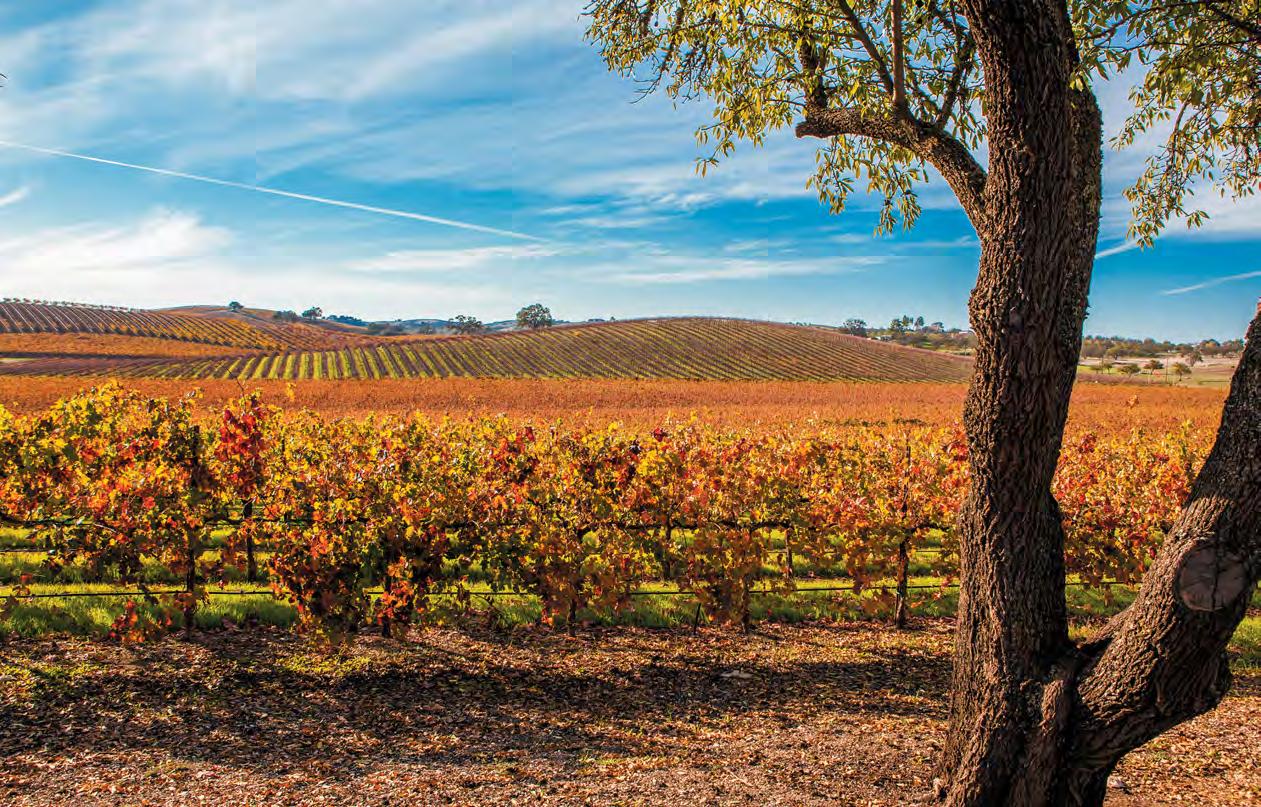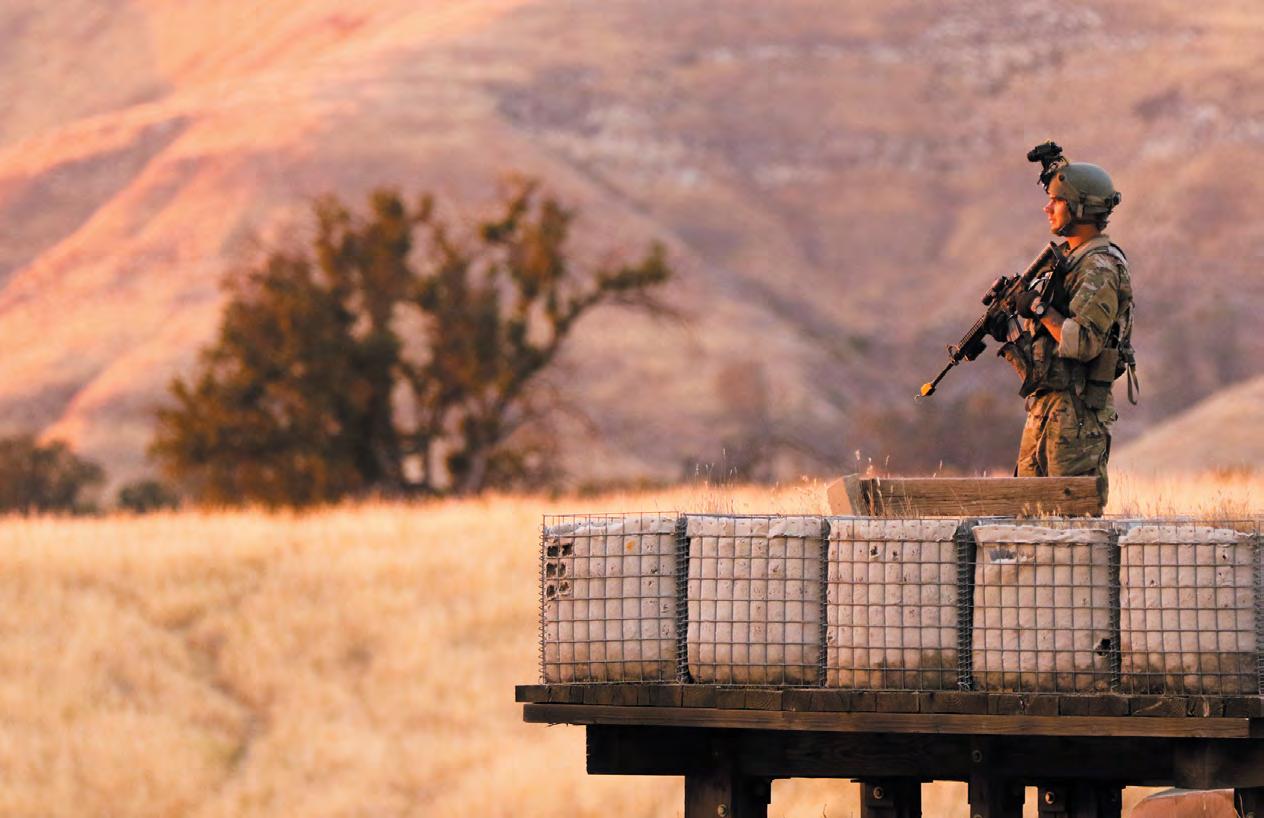
12 minute read
Olé! 2018 Mid-State Fair Results
Mid-State Fair breaks records in ag auctions, entertainment and more
By Melissa Chavez

here’s little doubt that Garth Brooks is a tough act to follow. Last year, the headliner who long surpassed both Elvis Presley and the Beatles in worldwide unit sales performed to two sold-out concerts at California Mid-State Fair. This year, for the first time ever at the fair, two artists, Eric Church and Luke Bryan, each opened to soldout concerts. In all, the Bud Light Concert Series of concerts drew 78,000 ticket sales from headliners that included Tim McGraw and Faith Hill, Demi Lovato, Dwight Yoakam and more. On the Frontier Stage, Kris Kristofferson also played to two packed houses. “ Despite the extreme heat, our attendance held strong at 427,000, similar to last year,” said Mid-State Fair CEO Michael Bradley. “The temperatures lowered at night, which really helped.” Indeed, carnival wristband sales saw an increase of five percent, and the addition of Helms and Sons Amusements saw $1,200,000 in sales, up five percent. What many fairgoers also noticed was the addition of shaded areas and places to rest in between activities, features that Bradley confirmed will be increased at next year’s fair. Overall, beautified buildings and landscape, concert diversity, attention to cleanliness throughout the grounds and restrooms and a safe environment elicited positive feedback from visitors, said Bradley. Livestock auctions saw a five percent profit, totaling $2,608,535 on 871 animals. The Industrial Arts Auction broke previous totals, reaching $100,825 for 61 entries. “Corporate sponsorships went up 21 percent,” said Bradley, “with about $1.2 million from businesses, exceeding the $1 million amount from 2017. He added that the Career Fair, which promotes apprenticeship programs and careers in the trades, caught lots of interest. P aso Robles’ Ashley Davis was crowned Miss California MidState Fair and Kimberly White of Nipomo captured both first runner-up and Miss Congeniality titles. In the Showcase of Cities, featuring window displays of 10 local communities plus County of San Luis Obispo and Cal Poly, the combined efforts of Nipomo and Oceano is what won the People’s Award. A slew of food and beverage industry awards were announced. Cass Vineyard & Winery was named 2018 Winery of the Year at the Central Coast Wine Competition, Kurt Bollinger was named Cattleman of the Year, Margaret Avila was named Cattlewoman of the year and Marilyn Britton was named Agriculturalist of the Year.



$125
At the Country Rodeo, John Varian of Parkfield was named AllAround Cowboy. Templeton’s Ashley Davis was awarded All-Around Cowgirl, and Chance Machado of Santa Maria was named the Timed Event Cowboy. “ FFA growth has increased to over 80,000 members in California,” Bradley said. “We need trained teachers to handle this growth. The fair is an expression of that.” Elements from the Supervised Occupational Experience Program (SOEP), a curriculum in which instruction is taught out-

Melissa Chavez can be reached at Melissa@pasomagazine.com side the classroom, are employed at the fair to help youth develop competencies related to agricultural careers. This was evident in the “Hands-On Farming, Joe Sabol Experience,” whose master teaching incorporates SOEP’s “Learn by Doing” methodology. Br adley emphasized that those who are often unseen by the public are vendors, sponsors and about 100 volunteers who begin preparing for the fair in early to midJune.
He also estimates that approximately 50 percent of fairgoers visit from outside the Paso Robles area. “We look at it ourselves as a treasure to the community,” said Bradley, who credits his staff and volunteer sweat equity for “pulling off a tremendous fair.” A sizeable portion of financial muscle comes from the Heritage Foundation. The nonprofit organization helps underwrite capital projects and improvements that support the California Mid-State Fair. “Without them, we couldn’t do what we do,” Bradley said. Sunday
Specials

Monday

Tuesday Wednesday
1/2 Off Wine Prime Rib
Proudly serving Salmon Picatta Chilean Sea Bass Mahi Mahi
Tri-Tip
$1 Oysters
Now serving Waygu Beef Ribs Waygu New York Strip
Private Parties: Three dining rooms for large and small groups Birthdays, wedding and rehearsal dinners, or holiday parties
6005 El Camino Real, Atascadero, CA 93422 Web: the-carlton.com | Email: info@the-carlton.com Call: (805) 461-5100 | Take Out: Call to Order Hours: Sun-Thu: 4p-9p / Fri-Sat: 4p-11p


Contemplate the Harvest Season By Melissa Chavez

From Row Crops to Grapevines, Agriculture is the Life’s Blood of North SLO County
Tim Barlogio,Jack Creek Farms “Harvest is where all your hard work pays off,” said Tim, who with his wife Joy and two daughters own Jack Creek Farms, a fifth-generation family business in West Templeton. “You fought the weather and everything against you. “When you have a good harvest, it makes you feel really good. It’s a year’s worth of work — and that’s when you get your paycheck. Makes you feel good inside. A good harvest is icing on the cake.” “It’s like this weather we’re having… trying to keep moisture on everything. We’ve got tomatoes, onions, peaches and plums coming, but the heat wiped out the berries, just dried them up,” Tim said. “From everyone I’ve talked to and everything I’ve seen, the grain crops look pretty good. The heat is raising heck with the apples, but the heat is fantastic for pumpkins. They’re just exploding! We’ll have our pumpkin patch in the last week of September. The last 10 days of the month is about perfect.
My father and my grandpa both always said, ‘Every year is different’ and it is, so I roll with it.” Amy Butler, Ranchero Cellars Amy not only makes Ranchero Cellars wine and pours it at Paso Underground in downtown Paso Robles, for decades she’s been entrusted to craft high-ranking vintages at other wineries. “ Harvest is the one chance we get to make the wine that will be sold over (depending on the wine) the next six months to over three years. We can have impacts later in the wine’s life, but the most important ones occur in the wine’s infancy, when it’s still actually just grapes. “Harvest is the culmination of the growing season — the end of one process and the beginning of another.
Harvest is a logistical puzzle, a scientific adventure, and an artistic gamble. “Because it’s so busy, I have to say that I haven’t experienced autumn in over 20 years. Or maybe this is my experience of autumn, seen under floodlights in the middle of the night from the side of a sorting table, seen from the seat of a forklift inside a barrel room, experienced as an impossibly dusty sunrise in a vineyard full of chattering harvesters. I think it might be my favorite season, anyway.” Gary Eberle, Eberle Winery At Eberle Winery in Paso Robles, Gary isn’t one to be stuck in an office. The man who helped established the Paso Robles AVA would much rather be outside in view of the grapevines. “Harvest is always the most exciting part of the year, unlike spirits or beer,” Eberle said. “When harvest is done, the first week is
exciting. The second week is fun. The third week, you need sleep. The fourth week, you just want a hot shower. By weeks six through eight, you think, ‘Oh, man. I’ll never have children.’ It’s sort of like when mothers remember the pain of childbirth yet are willing to have more babies. You remember the good and the bad. “I’m so pleased to see Justin Smith at Saxum, Eric Jensen at Booker, and Jeremy Weintraub at Adelaida Vineyards,” Gary mentioned, to name a few.
“I am stunned by — and I mean this in the most complementary sense of the word — by these ‘kids’ and the quality of wine they’re making. On a percentage basis, Paso Robles has better winemakers and wine than other regions in the state.” “This might sound trite, but it’s true — ‘a rising tide lifts all boats.’ Robert Mondavi taught me that we aren’t in the wine production business, we’re in the hospitality business.” Underneath Mondavi’s winery arch was the site of many sit-downs for the mentor and the kid who once tackled gridiron opposition for Penn State coach Joe Paterno. Today, Gary remains accessible to talk with people about wine and what he’s learned in business, but he’s likewise prone to share humor and a glass of wine with those who simply ask.
Melissa Chavez can be reached at Melissa@pasomagazine.com




XCTC 2,400 National Guard soldiers take part in tactical training at Camp Roberts, Fort Hunter Liggett
Imagine needing a tow truck for your disabled vehicle out in the middle of nowhere. Now imag ine this same scenario while under enemy fir e. Field combat, enemy suppres sion, tactical decision-making, dr one reconnaissance, air assault, and medivac capabilities were all part of a full-scale training op eration held recently at Camp Roberts and Fort Hunter Liggett. From July 21 to August 12, the Army National Guard eXportable Combat Training Capability (XCTC) program conducted exercises to certify platoon proficiency.
The 41st Infantr y Brigade Combat Team (IBCT), headquar tered in Oregon, coordinated the ex ercises in cooperation with First Army personnel. The training en abled soldiers to remain closer to civilian jobs and homes while honing skills for ongoing instruc tion and potential deployment while receiving oversight, coaching, mentorship and evaluation. O ver 2,400 soldiers from more than ten units convoyed from California, Oregon, Washington, and New Mexico for the instru mented brigade field operation. The y included: 1-186th Infantry (OR); 1-200th Infantry (NM); 1-303rd Cavalry (WA); 2-162nd Infantry (OR); 2-218th Field Artillery (OR); 741st Brigade Engineer Battalion (OR); 141st Brigade Support Battalion (OR); 189th Combined Arms Training Brigade (WA); 1-140th Assault Helicopter Battalion (CA). By Melissa Chavez A massive effort in soaring temperatures
Photo by Maj. W. Chris Clyne, 41st IBCT Public Affairs

“The training objective for XCTC was to provide lethal combat platoons,” said Col. Eric Riley, commander of the 41st ICBT. “We are working at com pany, battalion and brigade levels thr ough multi echalons to hone our battle skills throughout our area of responsibility.” Both posts w ere utilized to accommodate the size of the combined units, “push our logistical eff orts, stretch them beyond their capabilities at times, and push our communications to the max,” said Col. Riley.
“Observer Controllers provid ed checks-and-balances to rate ho w well our units, all outfitted with sensors, had performed,” said Maj. W. Chris Clyne, Public Affairs Officer, 41st IBCT.
Among their challenges that tested both stamina and mo rale were full-gear maneuvers in br utal temperatures that soared to 110 degrees.
“All our soldiers performed at or above expectations in a climate they were not used to,” said Lt. Cameron Sparks, S1,741st Bri gade Engineer Battalion.
At Camp Roberts, three Army National Guard soldiers from the Tactical Unmanned Aerial Systems (TUAS) detachment of the 741st Brigade Engineer Battalion in Oregon were recognized for performing an emergency landing of an RQ7B Shadow Unmanned Aerial Vehicle (UAV), valued at approximately $1.2 million. An engine malfunction occurred shortly after takeoff during an Army eXportable Combat Training Capability exercise.
Adjutant General Michael Stencel, commander of both the air and land components of the Oregon National Guard, awarded challenge coins to three National Guard specialists – Spc. Sean Chavez (aircraft operator), formerly of Templeton, Spc. Ammarae Broncheau (payload operator), and Spc. Zachariah Kellogg (crew chief). The trio was guided by Unmanned Aerial Systems instructors Sgt. Michael Avery and Staff Sgt. Sean Fuqua.
“We overcame issues with equipment, weather, and airspace and split our crew into day and night shifts,” said Spc. Chavez. “We worked cohesively and flew well past our shoot-for-the-moon goal to accrue 206.6 flight hours in just three weeks.
“The big thing for this exercise was unit integration; it allowed us to fit the different puzzle pieces together,” said Spc. Chavez. “Because we were together at the same time, we got the opportunity to directly communicate and train as one unified brigade, rather than separately at our various home stations, like we usually do. “TUAS provided route recon for engineer convoys, overwatch for infantry in defensive positions and hunted for enemy units. We even assisted a field artillery commander in improving concealment techniques by showing an aerial view of his gun placements,” Spc. Chavez explained.
Still a relatively new military occupation, units are learning of benefits that TUAS brings to the table.
“We were able to demonstrate to the brigade leadership how much of a tactical advantage we can provide,” said Spc. Chavez. “As a result, now everyone wants us.” Adjutant General praises UAV detachment Former Templeton grad, two soldiers commended



Lera Butter eld St. Louis Understated elegance in Westside Templeton new ranch style home3312 sq. ft. on 1 flat, usable acre. 509 bottle temperature controlled wine closet and too many special features to list...1373 Vineyard Drive. $1,179,000




Call today or visit today! 805-286-2670 REALTOR® BRE #00888772
PlatinumTeamProperties.com 1117 Vine Street, Paso Robles, Calif. 93446 LeraForHomes@gmail.com










